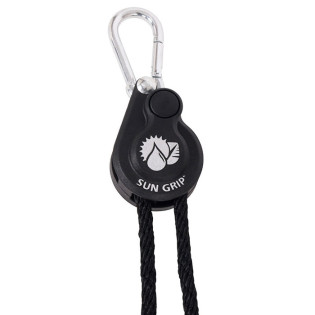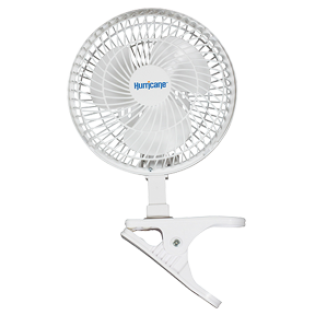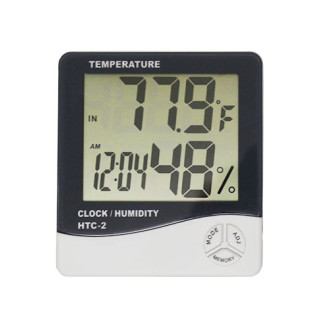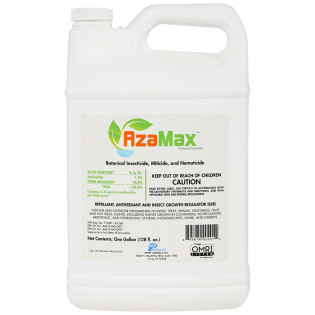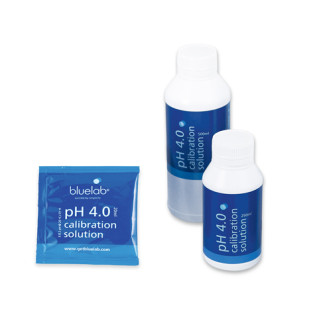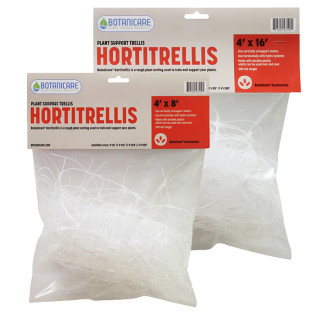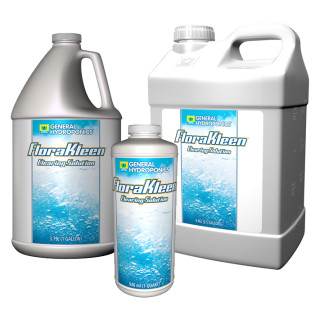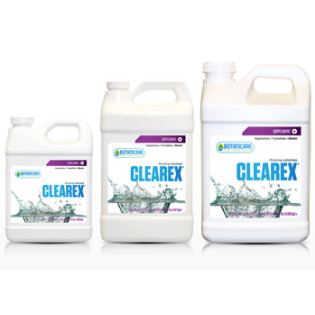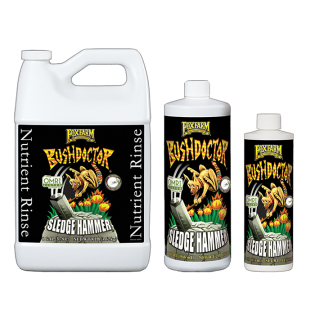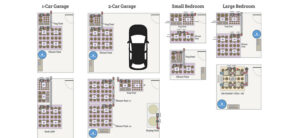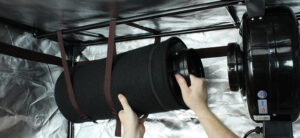
What costs less than a dollar and can save your garden? A daily grow room checklist!
Maintaining a checklist helps keep track of what’s been done and what needs to be done. You can also monitor techniques or products that may or may not have worked. Get results by organizing your grow!
Whether you are growing indoors or outdoors, in soil or a soilless mix, or hydroponically, it is important to maintain daily, weekly and monthly checklists and to take note of key observations in the grow room or garden.
If you aren't already maintaining a paper journal, there are even apps that can help get you digitally organized.
Don't just rely on your memory. Document what is happening with your garden so you don't forget anything you need. This quick checklist will get you started!
Work in your grow room during lights on
When growing indoors, it is important to maintain a healthy and consistent day and night schedule, preventing light leaks.
Plant behavior is controlled by the sun, or in the case of indoor growing, by grow lights.
When the lights are on, photosynthesis is occurring, and plants are soaking up the light to convert to energy. But when the lights go off, a plant is no longer consuming, and instead is focusing its energy into the processes of metabolism and growth.
For this reason, it is best to check plants while lights are on. This also prevents light leaks, a situation where you accidentally introduce light at the wrong time and trigger your plants into a different stage of growth.
When examining a plant, be sure to thoroughly inspect foliage at the top and bottom of the plant as well as the undersides of leaves, the stems, and grow medium.
If you are growing hydroponically, you can lift net pots out of the nutrient solution to inspect their roots as needed. In a soil grow it's best to refrain from disturbing roots unless you suspect a root problem.
Soil roots should be carefully inspected during transplanting since this is a natural time to examine roots.
Daily Grow Room Checklist
Here are some tasks you can quickly do every day in the grow room to ensure your plants are thriving.
All these tasks combined shouldn't take you more than five minutes, and if you hope to grow awesome plants, this isn't too much to ask!
Check Plugs & Settings
Check all your lights, timers, pumps, fans and power sources, making sure that everything is working properly and is safe.
Its also a great time to check to see that all surge protectors and cords are plugged in properly.
If you plan on leaving your grow unattended for a length of time, this is a critical step.
You want to be sure your grow room can function without you, and minimize the risk of fire.
If you think a cord needs to be replaced, it's always best to do so, and it is cheaper than the alternative.
Check The Distance Between Your Grow Lights & Canopy
Check the distance between your lighting and your plants. Be sure plants are getting the proper amount of light, but aren’t too close.
This is critical to prevent light burn as well as optimize light penetration through the canopy of your plants.
Adjustable light hangers are great for easily moving lights up and down as needed and won't rust or slip.
Are Your Fans Working As Expected?
Make sure all fans are working properly and air is flowing as it should be. Air movement is critical to prevent mold and mildew, and to provide fresh air to plants.
Fans should move air around plants, but never be pointed directly at plants. This will prevent wind burn and excessive transpiration.
A fan speed controller is a great way to prevent excess air movement inside your grow tent or room.
Monitor Temperature & Humidity
Check temperature and humidity to ensure they are within desired ranges for the stage of growth your plants are in.
Younger plants tend to prefer warmer and more humid conditions than mature vegging or flowering plants.
"Day" and "night" temperatures should never differ by more than 15°F (8°C) or excessive humidity and mold could become a problem.
A simple way to keep temperatures and humidity in check is with a temperature controller.
You can learn more about maintaining an ideal grow room environment in our complete guide.
Inspect Plants For Pests & Diseases
Check for pests, such as spider mites, on the top and bottom of leaves, the stems, and in the growing medium.
Catching these infestations early can save you a great deal of effort in keeping pests and insects at bay.
Mold and fungus can also wreck havoc with your grow. By carefully inspecting your plants, you can catch many diseases early.
A small loupe or portable microscope can be very helpful in these situations. Many mount directly onto smart phones for easy picture documentation.
If you do notice issues, our pest and disease control methods will quickly eradicate the culprit!
Learn how to eliminate many common garden pests in our learning center.
Watch For Issues With Nutrient Deficiency/Toxicity
Check for signs of nutrient deficiencies, toxicities, and other abnormalities in your plants leaves, stems, and growing medium.
See our guide to nutrient deficiencies to learn how to diagnose and treat each one.
It is also good to verify the nutrient solution you are providing your plants is at the correct dosage for the stage of growth your plants are in.
Using a nutrient and pH doser will save you from under or overfeeding, while keeping pH optimal.
If you are new to growing, check out our definitive guide on plant nutrition!
Rotate Your Plants For More Even Growth
Rotate or turn plants 90° each day.
This isn't absolutely necessary, but it gives a great opportunity to make sure that all plants are receiving the best light exposure, and to take a look at the texture, shape and direction of all the leaves.
To automate this essential process, use a light mover or supplemental side light bars.
Check pH Of Soil Or Runoff
Both soil and hydroponic grows need to be within the correct pH range in order for plants to optimally absorb nutrients.
An accurate pH meter is important to make sure that nutrient solutions are balanced and soil stays within the correct pH range.
If you are growing hydroponically, it is important to check EC and PPMs to ensure they are within the desired ranges. These are critical to the health of your hydroponic grow.
Be sure to regularly check the pH of your nutrient runoff as well. This way, you can adjust the original source and use a water filter if needed.
If you have never had to adjust pH levels before, learn how to with our video guide!
Remove Plant Matter & Clean Any Messes
Clean and organize the grow area. Remove all dead plant matter, and clear the floor of water or spills.
This reduces the likelihood of mold and mildew forming. At Hydrobuilder, we carry cleaning solutions for your grow room!
If you just pickup any leaves that have fallen as they fall, you won't have to worry about a big mess building up that could lead to insect or disease problems.
Journal Your Plant Progress & Take Photos
Make notes as needed in your grow journal to keep track of how your grow is going, problems and solutions you've found as well as any other information that will help you the next time you grow.
Keeping track of this information will make you a better grower and improve your yields.
Now, let's move onto weekly grow room checklist tasks.
Weekly Grow Room Checklist
Here are a list of tasks you should add to your weekly grow room checklist. Some of these will be duplicates of the daily grow room checklist.
That just means that you should do a bit more, such as taking a deeper look into your plants for mold, fungi, etc, or a deeper cleaning.
Check pH/EC Meters & Calibrate If Needed
A calibrated and well maintained pH meter is critical for accurate results. It's best to calibrate and clean your pH probes and EC meters every 1-2 weeks.
If you are using an auto dosing system, it's smart to keep a couple of extra probes on hand.
There's no sense in holding up an entire hydroponic system waiting for a probe to overnight to you.
Check for mold, fungi, pests, and nutrient deficiencies
This is an area where growers must remain constantly vigilant regardless of growing location.
Take the time to closely inspect leaves, stems, grow mediums, and even roots. In hydroponic systems, simply lift plants out of the nutrient solution to ensure that roots look white and healthy.
In soil, roots can be more difficult to observe so it is best not to disturb them unless you suspect a problem. It can be helpful to have a loupe or a small portable microscope in order to observe select areas of the plant.
Many can mount directly onto smart phones for easy picture documentation.
If you do find anything, use a strong insecticide to prevent the spread.
Even if you do not find any problems, it is recommended to undergo preventative spraying for bugs, mold, and mildew.
Do A More In Depth Cleaning
Again, clean up your grow area and remove dead plant material and clear water spills.
Excess moisture leads to humidity issues, and eventually, mold and mildew. Regular cleaning will prevent unwanted pests from detecting your grow.
You should take a damp cloth to the canvas of your grow tent, including the floor. This will help wipe away any unwanted microbial activity.
Pruning & Training Your Plants
Every week, look at your plants and decide how you want them to grow. Pruning allows you to train your plants to grow in the direction and form that works for your growing space.
You don't have to prune every week, but several days between pruning allows your plants time to recover.
Always use a sterile and sharp pair of scissors or pruners in order to minimize infection and plant damage.
To further direct plant growth, set up a trellis net.
This will help secure branches, and you can weave them through the trellis netting for additional support.
For more information, check out our complete guide on pruning to increase yield, along with our in-depth plant training guide.
Monthly Grow Room Checklist

Here are a list of tasks you should add to your monthly grow room checklist.
Clean pots and trays
Clean and sanitize any reusable trays, pots or containers, and saucers.
Excess mineral buildup in these areas can be more difficult to remove later on if left to harden. This can even create pH imbalances in extreme cases.
Dust and wipe off light reflectors
Light reflectors lose efficiency as dust and other material accumulate on the reflective surfaces.
It is important to clean these surfaces for optimal light spread and canopy penetration.
Excess dust can also hamper light cooling systems making them less efficient and noisier.
Check Bulbs & Replace As Needed
Check and change bulbs every 6 - 12 months as needed. Bulbs can loose up to 10% efficiency and light spectrum after 12 months of continual use.
Always handle bulbs with clean gloves in order to prevent oils from your hand creating hot spots on bulbs.
Even when lights are properly spaced from the canopy, hot spots can burn plant leaves.
Check Your Feeding Schedule
This is a good time to check feeding schedules to make sure you are on track. Plants that start late or bloom early require feeding schedule adjustments.
This allows growers to provide them the correct nutrients they need to grow strong.
This is also a great time to check light schedules, ensuring they're congruent to the plants stage of growth.
Many nutrient packages allow for extended veg or bloom periods. This is where you as a grower can check out your grow room journal and determine how you want to proceed.
Make A Monthly Journal Update
Document everything you've done so far and look back over your notes. You will start to see patterns emerge and this will help you plan for the future.
You can start predicting significant landmarks in your grow such as times to prune or when to harvest.
Flush Your Plants
This is a good time to flush your plants with a high quality flushing agent if nutrients and salts have built up in your hydroponic or soil grow medium.
Flushing cleans these excess minerals out and allows you to administer a fresh nutrient solution to restore balance.
If you are not seeing any nutrient related issues, you can flush every few weeks instead of weekly.
Be sure to constantly have 20-30% run off from your feeding to reduce mineral and salt build up.
Check out our complete guide on flushing plants for a more in depth look at this process.
Final Thoughts On Maintaining A Grow Room Checklist
By now, you know the importance of maintaining daily, weekly and monthly grow checklists.
Make sure you have tools and supplies prepared to cultivate the strongest plants possible!
If you want to learn more about the day-to-day tasks of growing inside, check out our indoor growing guide.
Or, if you are growing outdoors, we have a guide on that too! It will cover the outdoor growing calendar, and help you week by week with your garden.
It covers week by week responsibilities in the grow room!








